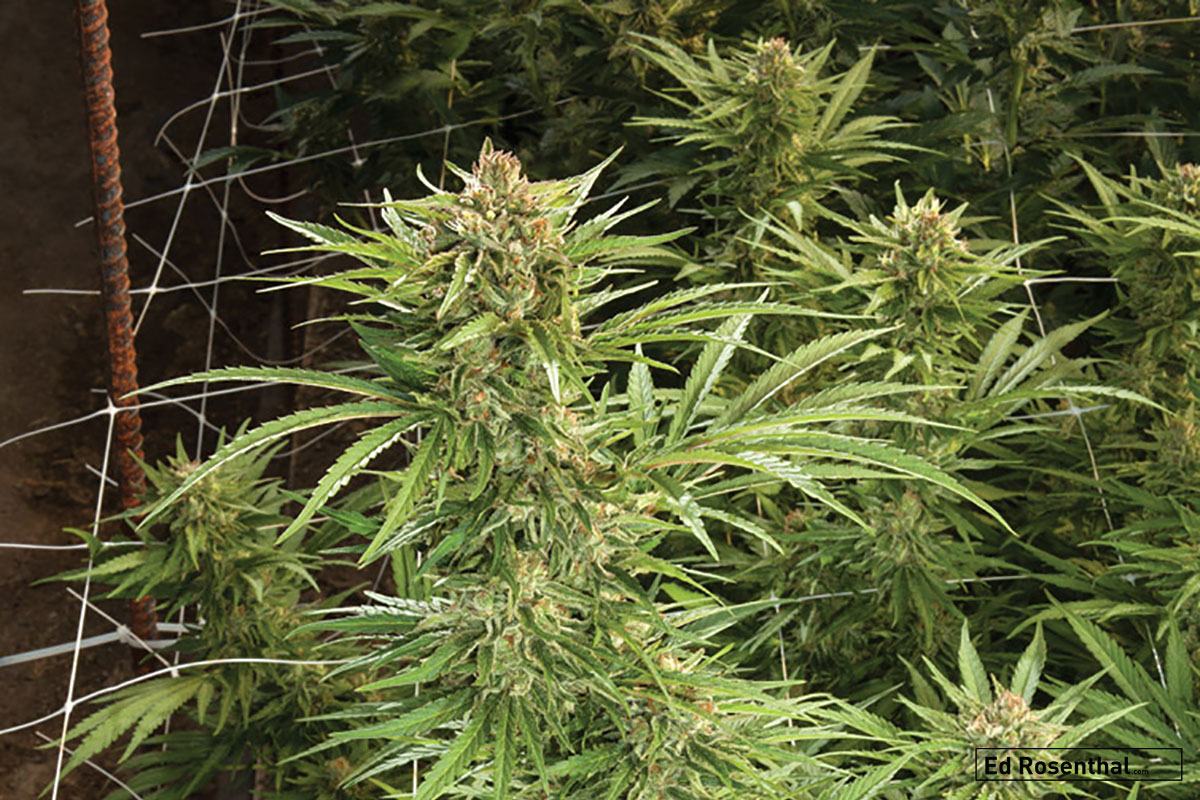The Golden Age of CBD
'SourTsunami' CBD strain.
Excerpt from THIS BUD'S FOR YOU: Legal Marijuana, Selecting, Growing & Enjoying Cannabis by Jimi Devine
In the 2000s strains heavy in cannabidiol, or CBD, took root in the hills of California. While the cannabinoid had first been isolated in 1963, thanks to the budding analytical lab scene breeders and growers in modern times now began to take note of its wide range of healing applications. Once bred out of much of the California’s cannabis gene pool due to a push to develop THC-laden heavy hitting strains, CBD was soon bred back in for its therapeutic benefits, which at the time still remained largely unknown.
It took a nonprofit organization and a mainstream television special to bring CBD to the masses, but today there are more and more CBD-strains than ever before.
In 1964, a year prior to his discovery of tetrahydrocannabinol, or THC, Israeli chemist Raphael Mechoulam discovered the chemical structure of CBD. However, the cannabinoid failed to spur research interest through The Summer of Love, and for good reason — Mechoulam published a paper in 1970 declaring CBD didn’t have any additional psychoactive effects based off feed-ing hash to monkeys. This period marked the first wave of CBD research and much of it was focused around its relationship with THC in the body and the first rumblings of CBD’s now famed anti-epileptic properties.
'Ringo's Gift'CBD strain - Photo Credit Nadim Sabella
With the earliest of trials showing an extremely low toxicity and no side effects, it was on to human testing. In the original test group of 16 healthy folks all showed no ill-effects from the CBD, and all the subjects slept well the first week. Now it was on to eight sick people suffering from epilepsy who were given daily doses of up to 300 mg of CBD and monitored monthly for up to four and a half months. The results were promising, four of the participants had almost no seizures for the length of the research and three of the other participants showed improvement in their symptoms, with the last patient seeing no effect on their condition. The CBD used in the study was an isolate very similar to what we see returning to dispensary shelves today and was produced by Mechoulam from Lebanese hash provided by Israeli Police. Despite these promising results, interest in the CBD research field continued to fade for decades.
'lf Chocolate Tonic' CBD Strain - Photo Justin McIvor
In 1998 things took off again in England. Thanks to CBD’s proven ability to degrade the psycho-tropic THC experience one gets from cannabis, GW Pharmaceuticals was able to convince the government they should be allowed to produce cannabis-based medicines that would not get people high. GW released their findings to the world showing CBD was more beneficial than originally thought and continued their efforts on the back of genetics provided by Californian-led Hortapharm B.V., the first farm licensed by the government of the Netherlands to grow research-grade cannabis. In 2015, GW’s intravenous CBD was fast-tracked by the FDA for neonatal hypoxic-ischemic encephalopathy, which currently affects up to 24,000 newborns a year in the U.S. and Europe. In October of 2016, the U.K. officially declared the CBD molecule to be medicine. This dramatic announcement was spurred by the work of a nonprofit organization in California and followed in the wake of a mainstream television documentary that lead to CBD laws being enacted in conservative states across America.
'Ringo's Gift' CBD strain.
In 2010, the organization Project CBD, lead by Martin Lee, helped bring the cannabinoid closer to the forefront of medicine by developing CBD-rich strains. This action marked the year CBD would become more widely available of California dispensary shelves. Since then, farmers have continued to push the medical envelope, now producing strains CBD to THC ratios as high as 30 to 1. These elite medical strains have found their way into a variety of delivery systems for medical cannabis patients including edible, topical and other concentrated options.
“Weed” was a special documentary hosted by CNN chief medical correspondent Sanjay Gupta that first aired in 2013. With this special, and subsequent follow-up documentaries, CBD hit the mainstream media in a major way offering many families a glimmer of hope for children battling severe seizure conditions.
'Sour C-Train' CBD strain - Photo by Nadim Sabella
Today, many have been uprooted from across the U.S. in search of treatment in states like Colorado and California. These medical cannabis refugees have driven much of the progress seen in past few years. Sadly, these family's stories have, on occasion, been used by politicians to create empty medical cannabis laws, writing CBD-only legislation in states with zero access to medical cannabis, without providing a means for that oil to be produced, sold, or regulated. Despite these setbacks, the development of CBD-rich strains continues to grow and, as more and more research reveals the healing applications of this cannabinoid, we will surely see cannabis breeders creating additional strains showcasing the awesome power of medicinal cannabis.
Join our cannabis community
Follow Us











